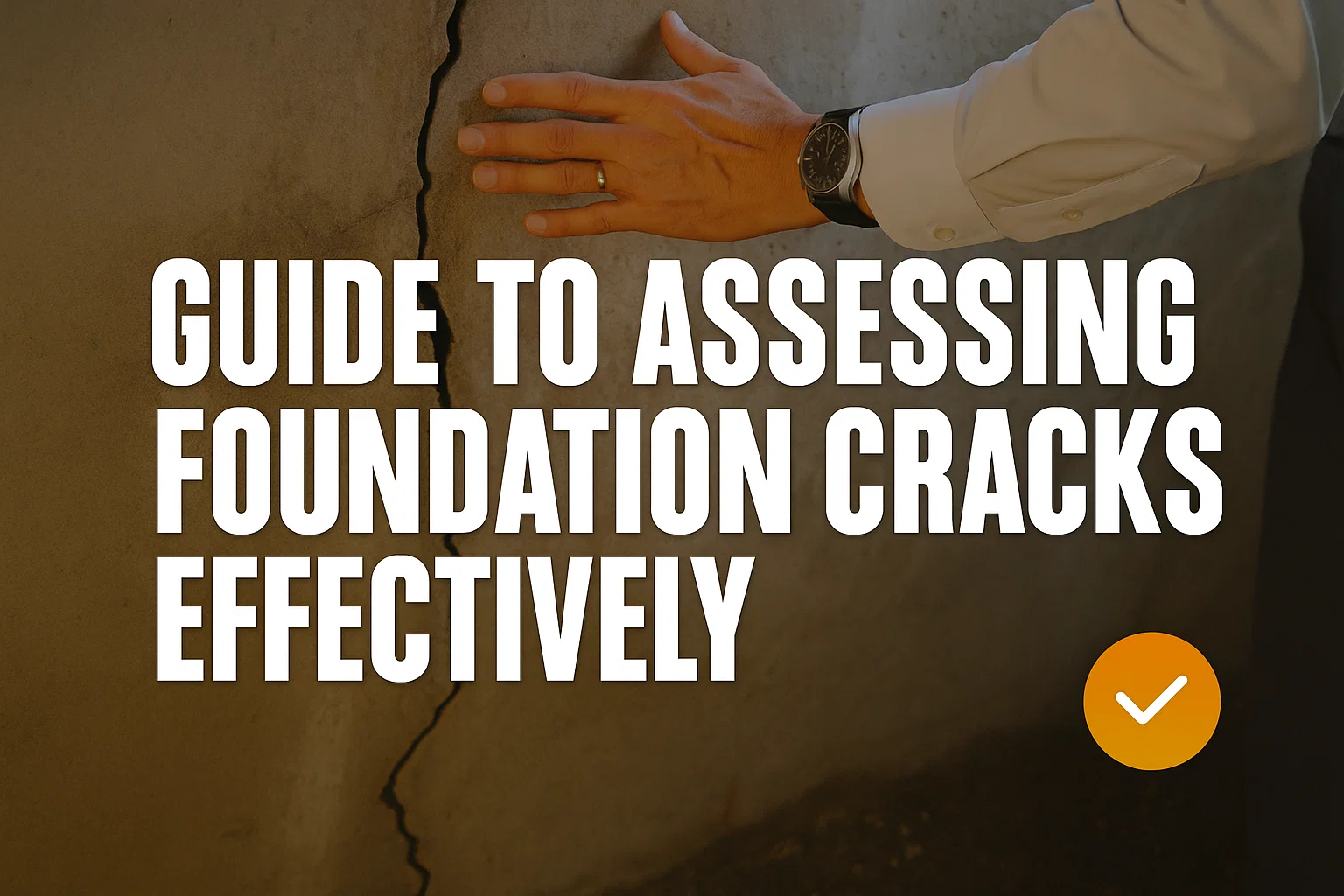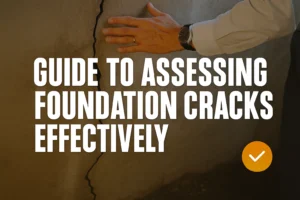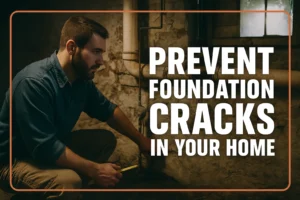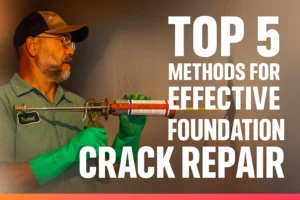The cracks in the foundation may be worrying, and when you are not familiar with what they entail and the severity they may relate to, this may be worrying. Many homeowners can see that the foundation of their house has a crack and may wonder whether it is a minor issue or a more serious problem. The fact of the matter is that not all cracks are harmful; however, some may cause significant problems when left.
The positive thing about it is that there is an easy way to understand how to evaluate foundation cracks informally and transparently. When you are aware of what to look at, you can find it much easier to identify the early signs of trouble, do damage avert and keep your house secure. This guide will take you through the task and guide you through.
Why You Should Assess Foundation Cracks Early
An early check of your foundation will keep you out of greater cracks later in the home’s foundation. When the cracks are detected at the initial stage, they are easier to repair, cheaper, and less stressful. Waiting too long, what is a hairline crack might burst into a large issue that is concerned with the structure of your home.
Some cracks can tell you what is going on under your house precisely. A narrow crack will merely be a mark of the normal settling, whereas a broader or jagged one can indicate foundation cracks in the structure. Early analysis will give you an insight into the difference and get things done in time.
Where Foundation Cracks Usually Appear
The cracks of the foundation may appear in different locations, and each of them provides hints regarding the cause. The cracks in the foundation may be present on:
- Basement walls
- Cinder block foundation walls
- Concrete foundation slabs
- Exterior foundation walls
Cracks in the foundation can also show up near:
- Basement windows
- Door frames
- Floor edges
- Corners of walls
Varied sites convey varied narratives and the location where to search is a larger aspect of effective evaluation of foundation cracks.
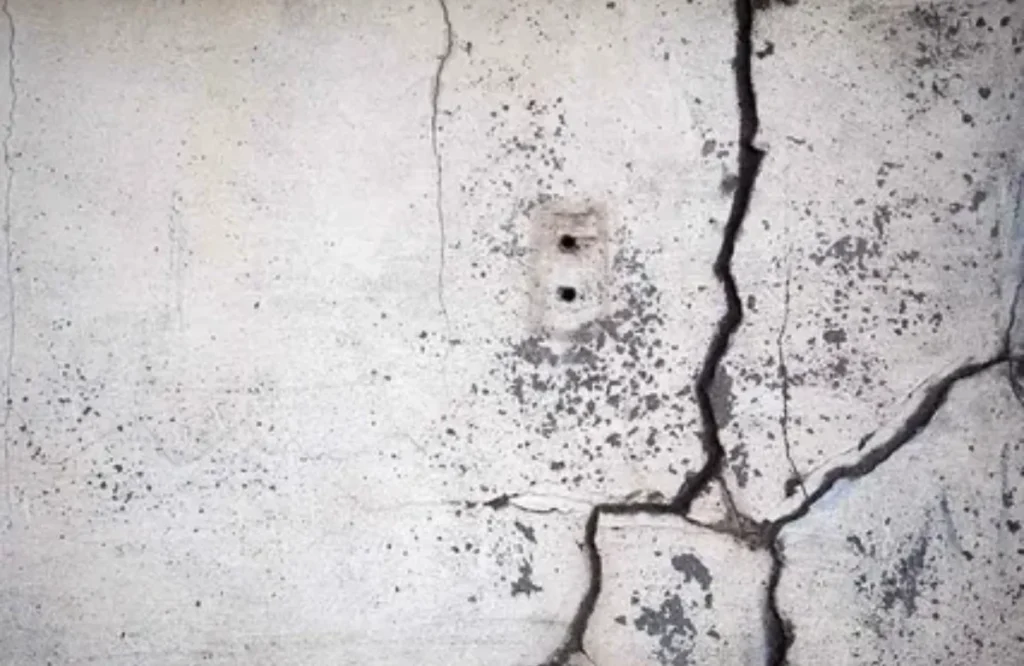
How to Assess Foundation Cracks Effectively
In this section, I will provide you with step-by-step instructions on how to tell, measure, and assess cracks in the foundation. Being the essence of the matter, it is described using examples, signs, and steps to follow.
1. Understand the Different Types of Foundation Cracks
Not all cracks are the same. There are the harmless ones and those that suggest deeper problems. To determine the cracks accurately, it is essential to first identify their type.
A. Hairline Cracks
Hairline cracks are extremely thin and are prevalent in new houses or houses constructed on concrete slabs. They tend to occur due to the shrinkage of concrete during the drying process. Such cracks can be non-structural.
B. Vertical Cracks
The vertical cracks are directed directly up and down. They can also be a result of natural settlements. These are negligence types most of the time and are nevertheless to be observed.
C. Diagonal Cracks
The diagonal cracks are at an angle. They may be indications of an unstable shoulder or moving ground. There is a need to apply more effort to these cracks as they may expand.
D. Horizontal Cracks
The most severe ones are the horizontal cracks. They tend to appear on the basement wall, particularly on a cinder block foundation. These cracks can also indicate inward pressure as in soil movements or pressure of water. These are normally professional jobs.
E. Stair-Step Cracks
Cinder block foundations have stair-step cracks, which adhere to the form of the blocks. These cracks tend to imply that the soil is moving or shrinking. These are things that you need to watch.
2. Measure the Size of the Crack
The size is essential during the evaluation of foundation cracks. The depth and the width inform you of how serious the problem can be.
- Less than 1/8 inch: Generally normal and it does not have to be serious.
- 1/8 to 1/4 inch: Requires observation and can possibly be fixed.
- More than 1/4 inch: This means that there can be cracks in the foundation structure.
- Widening over time: A symptom of continuous motion or sinking.
Measure the crack using a ruler or even a coin. A simple method of tracking changes is a conventional coin.
3. Check if the Crack Is Growing
A growing crack is more serious than a stable one. To track changes:
- Mark the ends of the crack with a pencil
- Write the date next to it
- Check again in 1–2 months
If the crack spreads, deepens, or widens, it may be a structural issue.
4. Look for Other Warning Signs in the Home
Sometimes, cracks are only one part of the story. Assess your entire home for signs of a cracked foundation.
Look for:
- Sticking doors or windows
- Uneven floors
- Gaps near baseboards
- Cracks in interior drywall
- Bowing basement walls
- Water is leaking through the crack
When several of these signs appear together, your foundation may be shifting.
5. Consider the Material of Your Foundation
The type of foundation you have can change how cracks behave.
Cinder Block Foundation
- Often shows stair-step cracks
- Can bow inward under pressure
- Needs quick repair if cracks widen
Concrete Foundation
- Can develop long, thin cracks
- Horizontal cracks are more serious
- Cracks near corners may point to soil movement
Crack in House Foundation vs. Crack in Foundation of House
Both phrases refer to structural cracks, but assessing them means looking at the severity, size, and growth.
6. Check Moisture Levels Around the Crack
Moisture makes cracks worse. Look for:
- Damp walls
- Water stains
- Mold or mildew
- Soil erosion outside the home
If water is entering through cracks in the foundation, you may need waterproofing along with structural repair.
7. Understand the Cause Before You Repair the Crack
Repairing the crack without fixing the cause is a short-term solution. Foundation cracks come from:
- Poor drainage
- Expanding soil
- Drying concrete
- Heavy rain pressure
- Plumbing leaks
- Poor construction
Knowing the cause helps you choose the right type of repair.
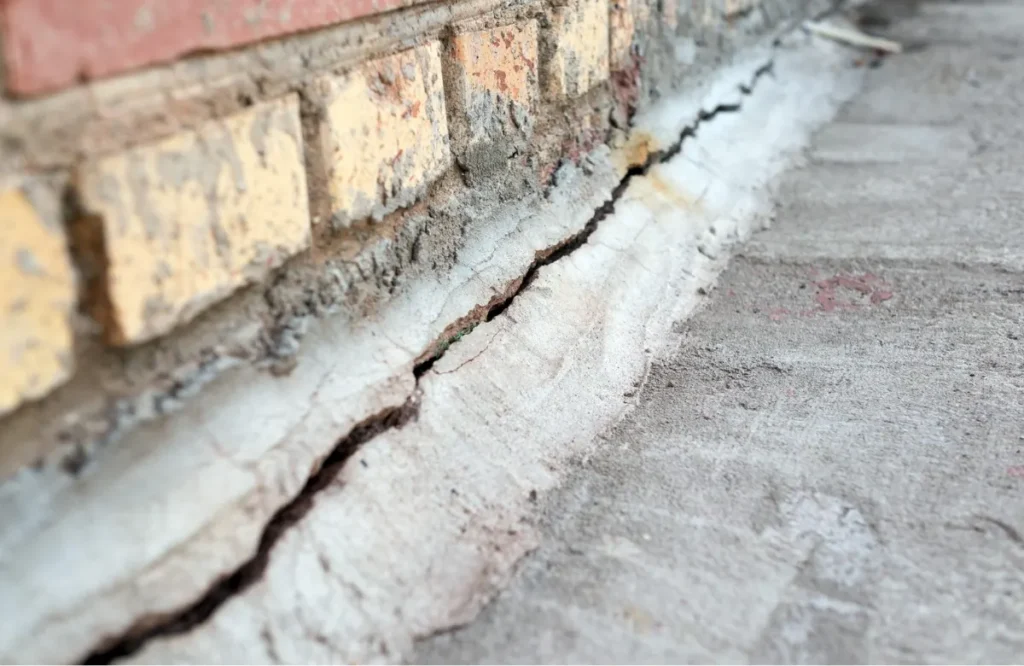
8. Know When to Call a Foundation Expert
Some cracks should never be ignored. Call a professional when:
- The crack is horizontal
- The wall is bowing
- The crack is more than 1/4 inch
- Water is flowing in
- You see large stair-step cracks
- Doors and windows stick along with the crack
Experts can diagnose structural foundation cracks and provide long-term solutions.
Benefits of Assessing Foundation Cracks Properly
Checking your foundation regularly offers many benefits. It helps you avoid bigger problems and protects your home.
1. Saves You Money
Fixing a small crack is much cheaper than repairing a cracked foundation later. Early checks prevent costly damage.
2. Keeps Your Home Safe
A stable foundation means safe walls, floors, and ceilings. You avoid dangerous structural issues.
3. Protects Home Value
Homes with foundation cracks lose value fast. Regular assessments help keep your home solid and appealing.
4. Avoids Stressful Repairs
Foundation repairs can be stressful and time-consuming. Early assessment keeps repairs simple and smooth.
Tips for Assessing Foundation Cracks Like a Pro
Here are some simple strategies you can use:
- Check your foundation twice a year
- Look for new cracks after heavy rain
- Clean gutters and downspouts to prevent water pressure
- Monitor cracks with photos and measurements
- Keep soil moisture balanced around your home
These habits make assessing foundation cracks easy and effective.
Conclusion
Foundation cracks don’t have to be scary when you know what to look for. By learning the types of cracks, checking their size, and watching for warning signs, you can understand what your home needs. Regular checks keep you ahead of problems, save money, and protect your home for years.
To explore more, visit LaPans Waterproofing.
FAQs
No. Some cracks are normal, but others can be signs of structural problems.
Horizontal cracks are the most serious because they can mean wall pressure or movement.
Mark the crack with a pencil and recheck it in a month. If it widens or spreads, it’s growing.
Yes. These foundations often show stair-step cracks and sometimes bowing walls.
Hairline cracks are often harmless, but keep an eye on them to be safe.
Common causes include soil movement, water pressure, poor drainage, and natural settling.
Call a professional when the crack is more than 1/4 inch, horizontal, or causing other problems in the home.

